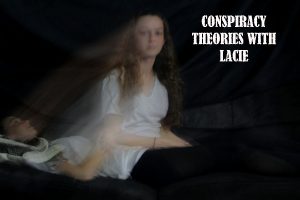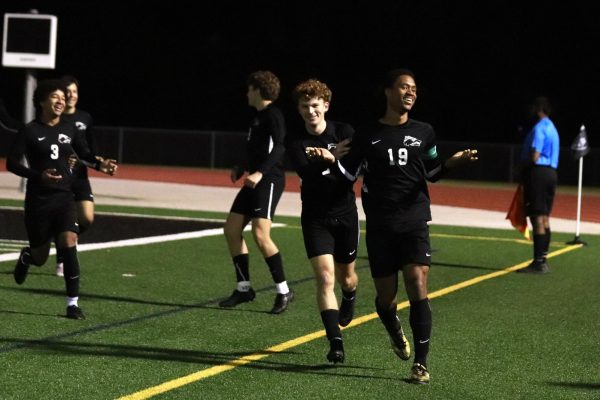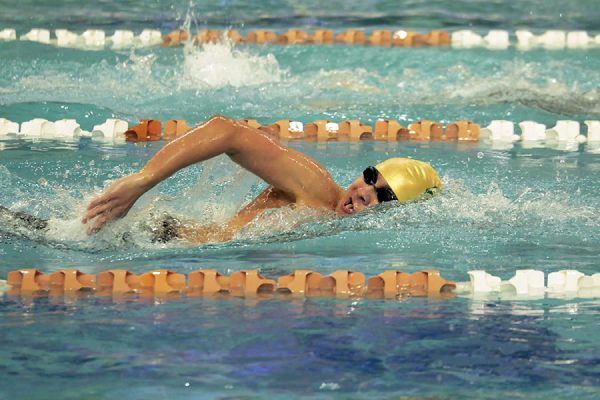Death down the hall
Matthias’ Classes Begin Crime Investigation on Staged Dead Body
The body of Anna Garcia lays on the floor of the upstairs A-building alcove on Aug. 20. Garcia was placed here by Principles of Biomedical Science teacher, Nancy Matthias, so her students could crack the annual case throughout the year. “We learn through our curiosity, we learn through doing,” Matthias said. “By letting the students come up with their own ideas, their own theories, they learn it better because it is hands-on.”
August 22, 2018
Blood spattered across the white tile and pills laying just feet away from a syringe. Crime scene tape stretched wall to wall.
On Monday, Aug. 20, shocked faces lined the halls as students spotted Anna Garcia’s body for the first time in the upstairs alcove of the A-building. However, this shock was soon wiped away when they realized that she was only plastic.
Passerby junior, Madison Markunas, said she was on the way to her second period when she initially saw the body.
“At first I was confused until I saw an AP standing near it,” Markunas said. “I was thinking, why is there a dead person on the floor and no one is doing anything about it?”
But no need to worry- the body was placed there in the name of science by Principles of Biomedical Science (PBS) teacher, Nancy Matthias. Every year, Matthias hosts this project which is called “The Death of Anna Garcia.” The case is developed for teachers like Matthias by the non-profit, Project Lead the Way.
Throughout the entire year, students use the crime scene evidence like fingerprints, blood, pills and a syringe to solve the case, but they will also be given Anna’s medical history, a partial autopsy report and people of interest to the case.
“It could be anything from her medical problems to a slip and fall,” Matthias said. “Anywhere that their imaginations take them.”
On the first day at the scene, PBS classes took photographs of what they found, and on their second day, students came prepared with paper and clipboards to sketch it out by hand.
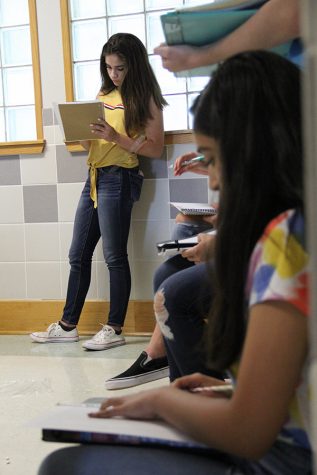
Surrounding Anna Garcia’s dead body, PBS students sketch out what the crime scene looks like.
One of the students sketching on Tuesday, freshman Sam Hoskere, said that he prefers this hands-on experience over the common worksheet.
“You can see what is going on instead of just looking at a picture,” Hoskere said. “Go up there instead of sitting at a desk.”
Hoskere said that between the many possible causes of death, he does not believe that suicide was the case for Anna. He said that it is unlikely that she used pills and a syringe to kill herself, and there are other pieces of evidence on the scene that could point to murder.
“If she were to [commit] suicide I don’t think all of those things would be necessary,” Hoskere said. “I think the things were planted there, because the pills are scattered in one area, there is a footprint, there is blood on a cup and there is blood on the table where it shouldn’t have been.”
If solving Anna’s death was not enough exposure to what investigators do, students will also be researching various careers that are relevant to the case. Each career will be researched in the order which they apply in an investigation, meaning that a 911 operator would be first, policemen next and then a coroner.
This additional aspect of the project can bring a new perspective to the students’ studies.
“It is taking biology into real life,” Matthias said. “Because you see it on TV, but you don’t know the steps behind it.”
In addition to the hands-on nature of the case, Matthias said that giving her students the liberty to experiment on anything they are curious about is what makes this such a valuable project.
“We learn through our curiosity, we learn through doing,” Matthias said. “By letting the students come up with their own ideas, their own theories, they learn it better because it is hands-on.”

![Posing with their UIL State Trophy, the Robolobos Van Halen Team beams with excitement after their win. “It was a team effort,” junior Noah Vo said. “I was happy because something happened in the first match and the match was also really close. So [when] they finally revealed it, I was pretty happy.” Photo courtesy of Amy Lovelace](https://cphswolfpack.com/wp-content/uploads/2025/05/IMG_0910-EDIT-1200x723.jpg)
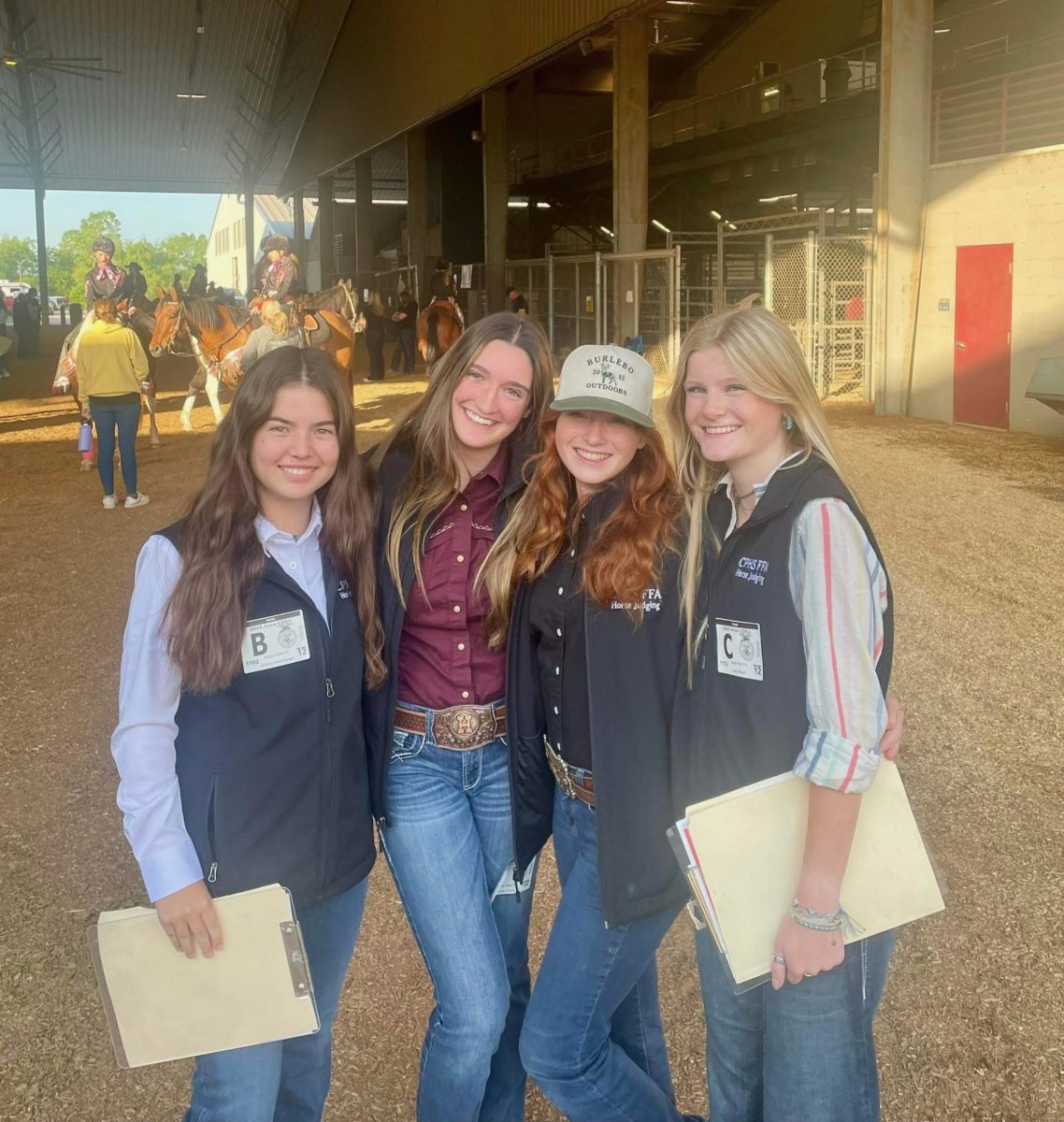
![Broadcast, yearbook and newspaper combined for 66 Interscholastic League Press Conference awards this year. Yearbook won 43, newspaper won 14 and broadcast took home nine. “I think [the ILPC awards] are a great way to give the kids some acknowledgement for all of their hard work,” newspaper and yearbook adviser Paige Hert said. “They typically spend the year covering everyone else’s big moments, so it’s really cool for them to be celebrated so many times and in so many different ways.”](https://cphswolfpack.com/wp-content/uploads/2025/05/edited-ILPC.jpg)
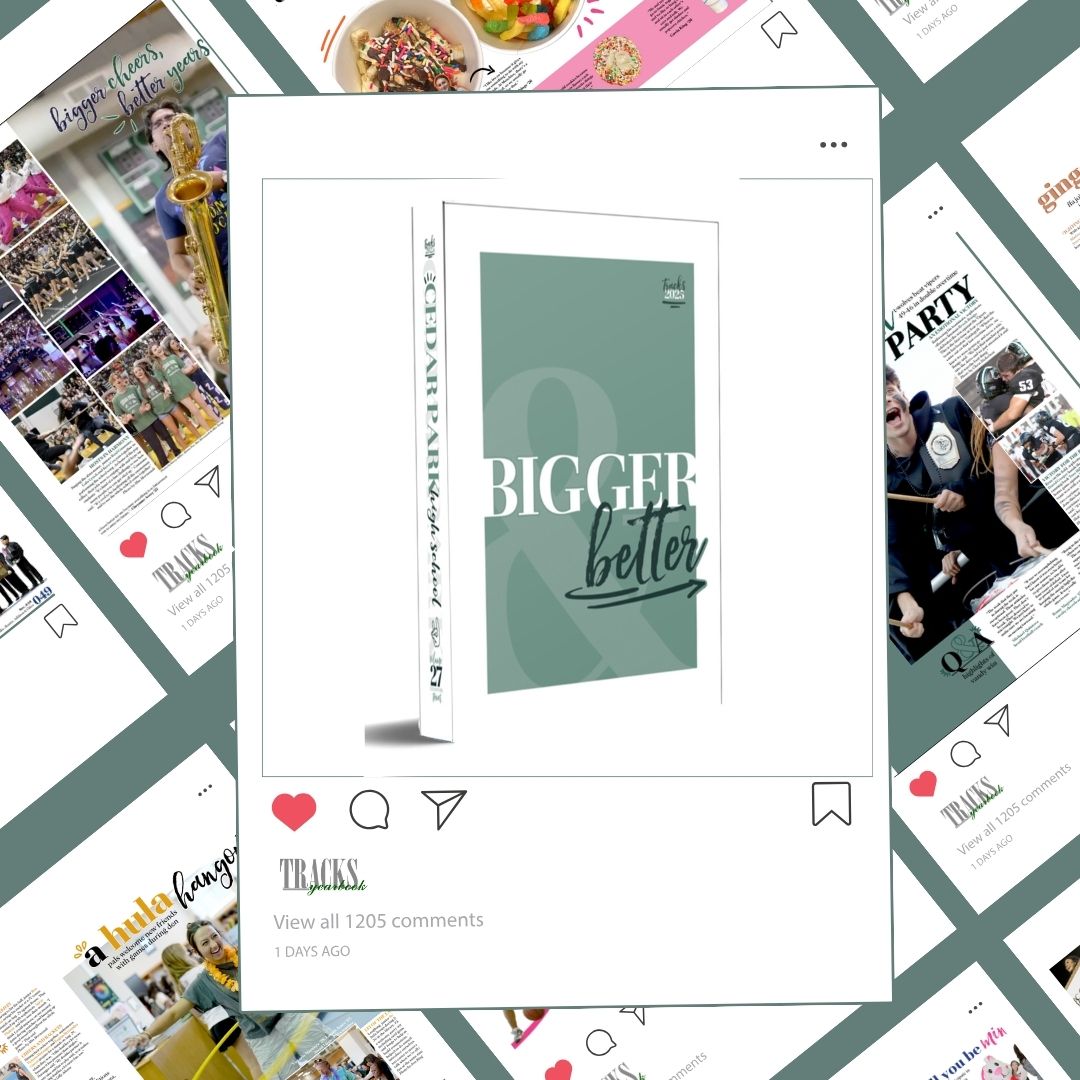

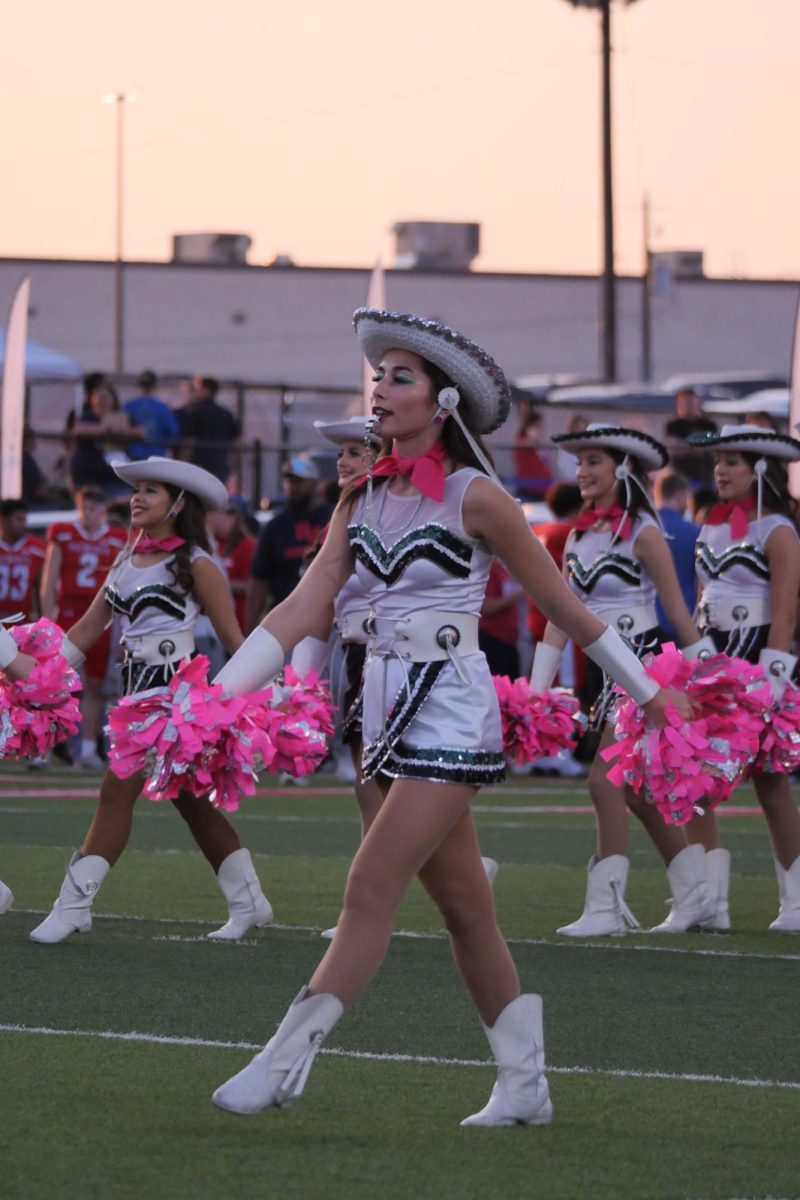





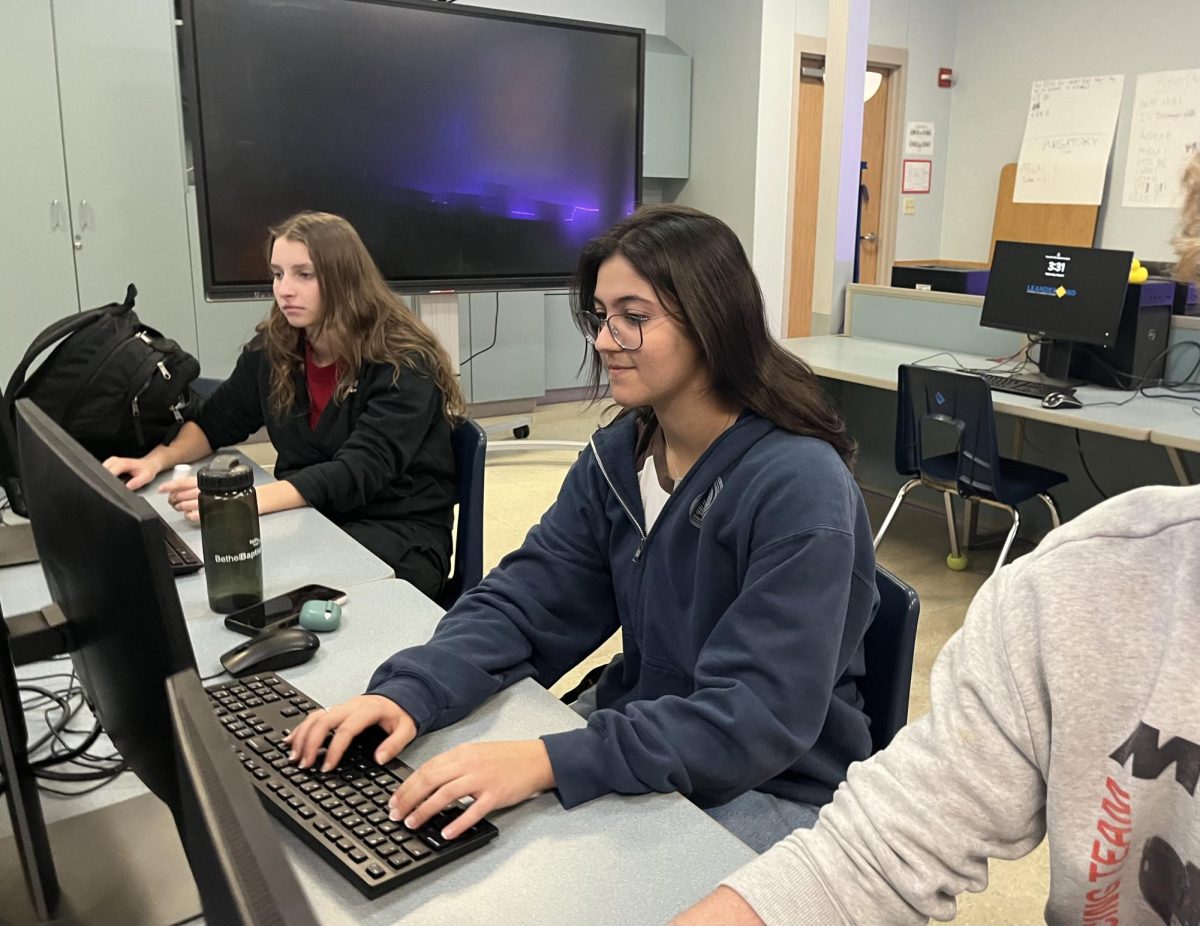


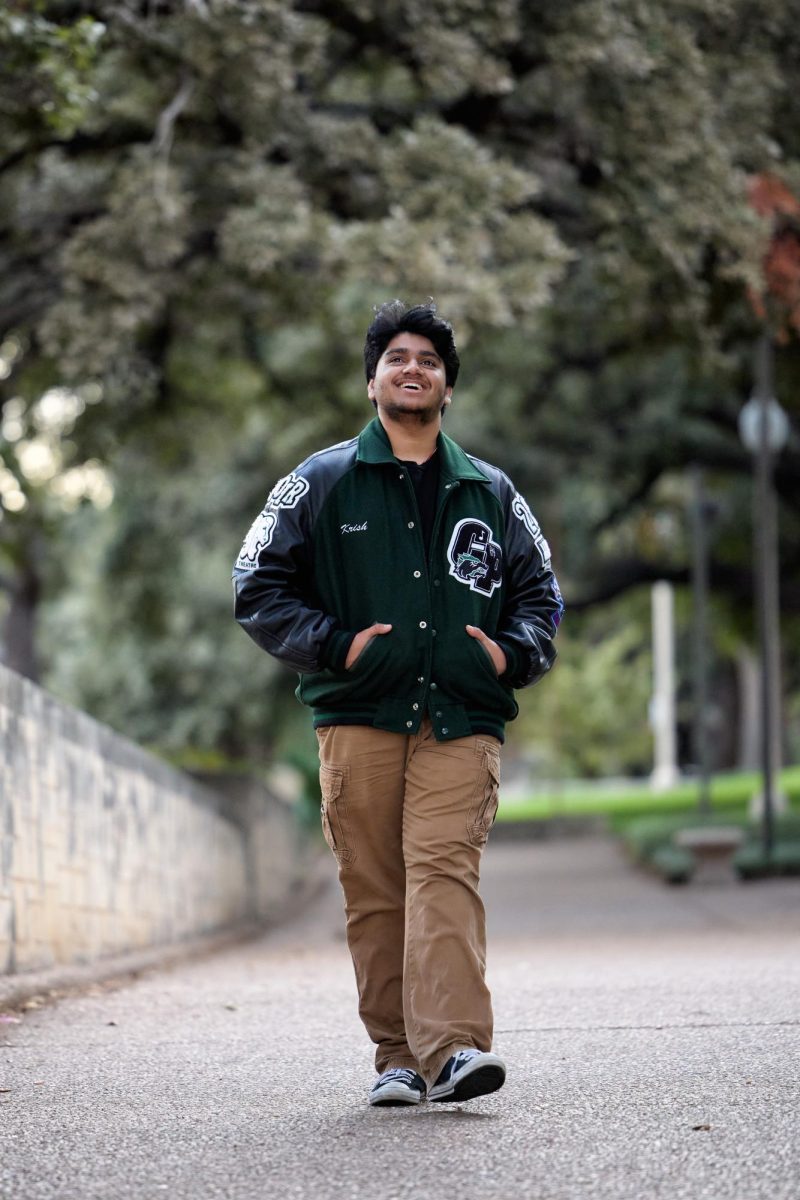
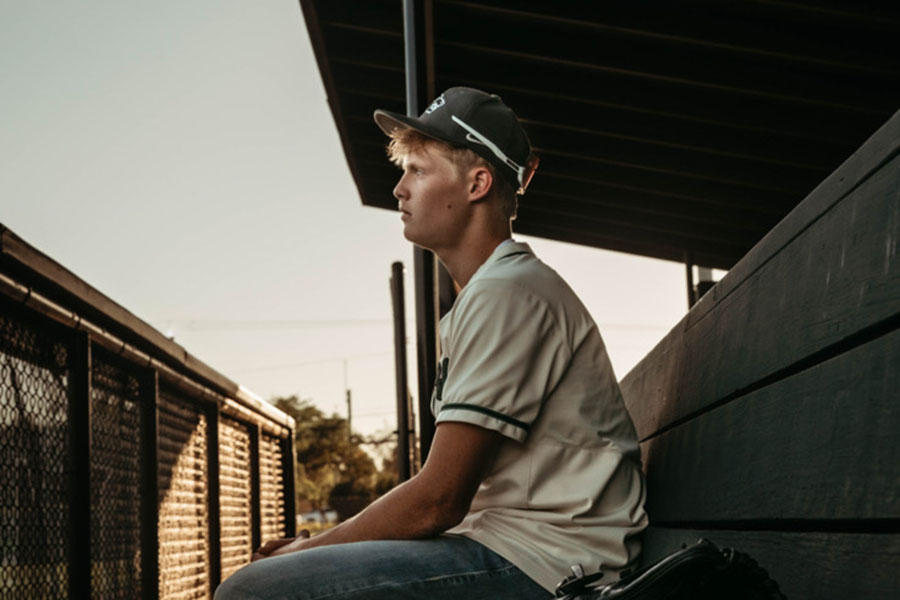
![Bringing her arm over her head and taking a quick breath, junior Lauren Lucas swims the final laps of the 500 freestyle at the regionals swimming competition on date. Lucas broke the school’s 18-year-old record for the 500 freestyle at regionals and again at state with a time of 4:58.63. “I’d had my eye on that 500 record since my freshman year, so I was really excited to see if I could get it at regionals or districts,” Lucas said. “ State is always a really fun experience and medaling for the first time was really great. It was a very very tight race, [so] I was a bit surprised [that I medaled]. [There were] a lot of fast girls at the meet in general, [and] it was like a dogfight back and forth, back and forth.” Photo by Kaydence Wilkinson](https://cphswolfpack.com/wp-content/uploads/2025/03/Kaydence-2.7-23-edit-2.jpg)
![As the support team sits and poses for a photo in the cafeteria with the counseling team they eagerly wait to start their day. "We [all] seem to be a team, I get up every day and there's days where I don't want to go to work today, but I'm thankful that I have a job and I'm blessed to have what I have," Christopherson said. Photo Courtesy of Julie Weltens.](https://cphswolfpack.com/wp-content/uploads/2025/01/AF9E8470-10D7-4C91-BF28-EC8F86BAB66C-1200x852.jpeg)
![Officer Stephanie Cash is in her second year as an SRO at CPHS. “Seeing [students] grow over the years has been kind of cool,” Officer Cash said. “Freshmen that [are] all over the place and then in the next couple of years get a little more squared away and go to class and do work and start thinking about the future. Being a part of a student's growth is the best way to measure my success as an SRO.” Photo Courtesy of Cedar Park Police Department's PIO, Alicia Gallagher.](https://cphswolfpack.com/wp-content/uploads/2024/12/CPHS-SRO-900x1200.jpg)


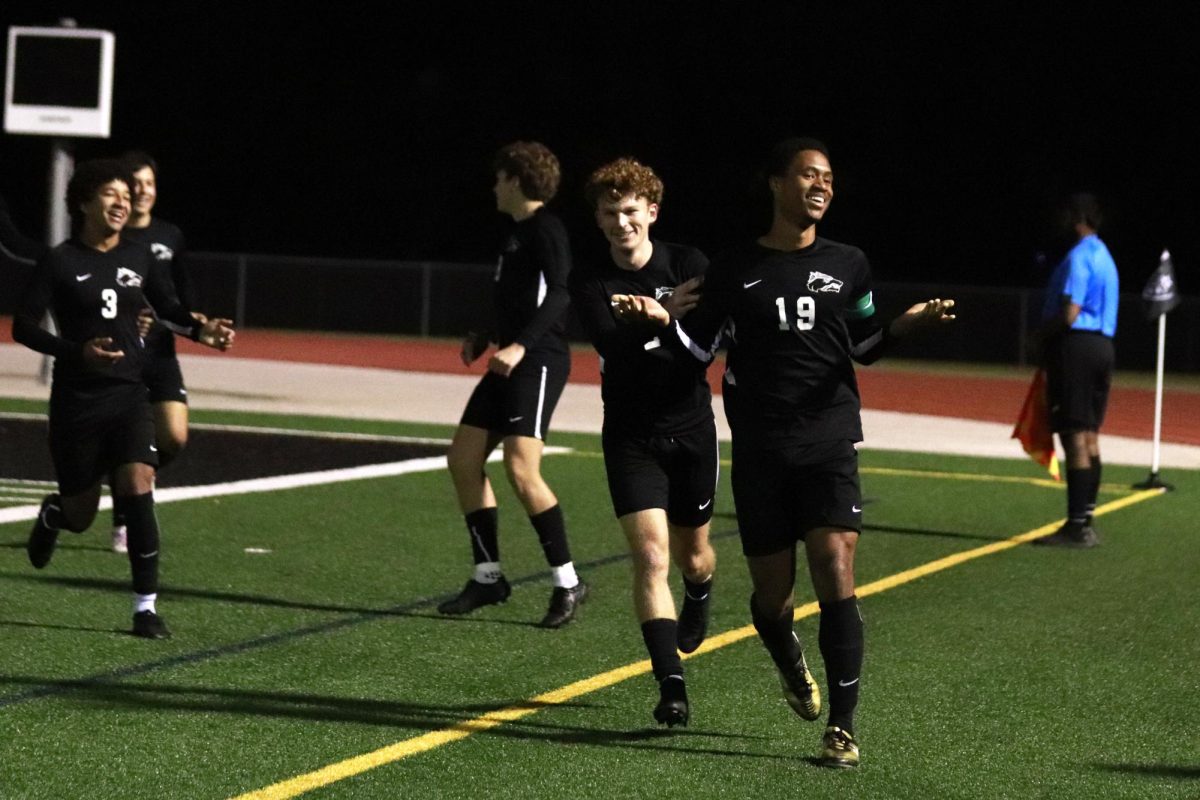
![Taking a breath as he raises his arm up and out of the water, sophomore Kaden Padilla swims the 500 freestyle at the UIL state meet on Feb. 21-22. Padilla placed 10th overall and second in the consolation final in the event, dropping two seconds. “My family was there, so being able to drop time for them was really special,” Padilla said. “It was awesome [finding out I advanced to the consolation finals]. I wasn’t expecting it, and I was very surprised. My parents being there definitely made me a lot happier knowing they got to see me swim in finals.” Photo by Skyler King.](https://cphswolfpack.com/wp-content/uploads/2025/03/kaden-padilla.jpg)

![Three defenders try to stop senior point guard Hope Edwards before the ball leaves her hands. The girls basketball team faced Liberty Hill on Feb 21, losing 58-40. “[My season was] definitely bittersweet,” Edwards said. It's definitely sad [because] I'm gonna miss all my teammates, my coaches and just the whole CP environment.”](https://cphswolfpack.com/wp-content/uploads/2025/03/julia-128-1200x800.jpg)
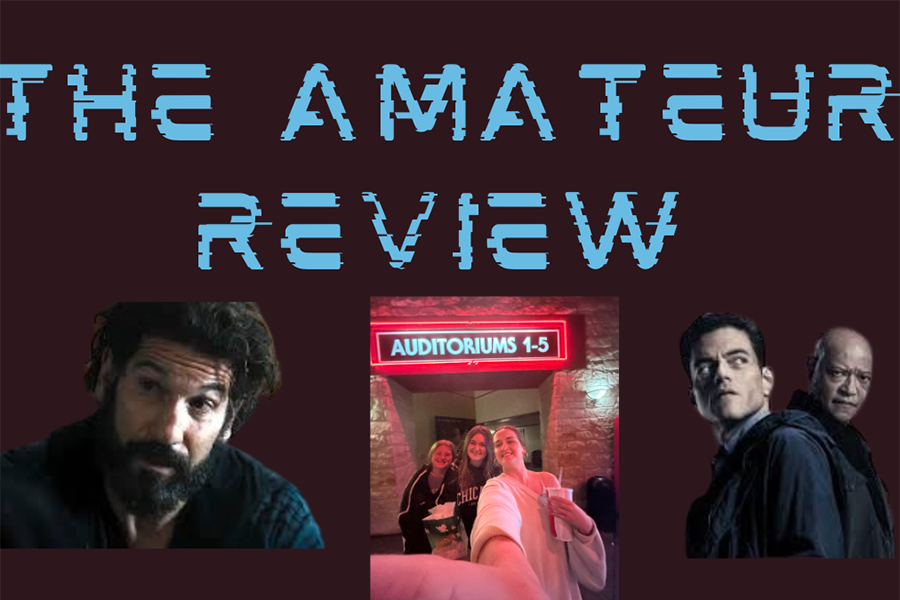
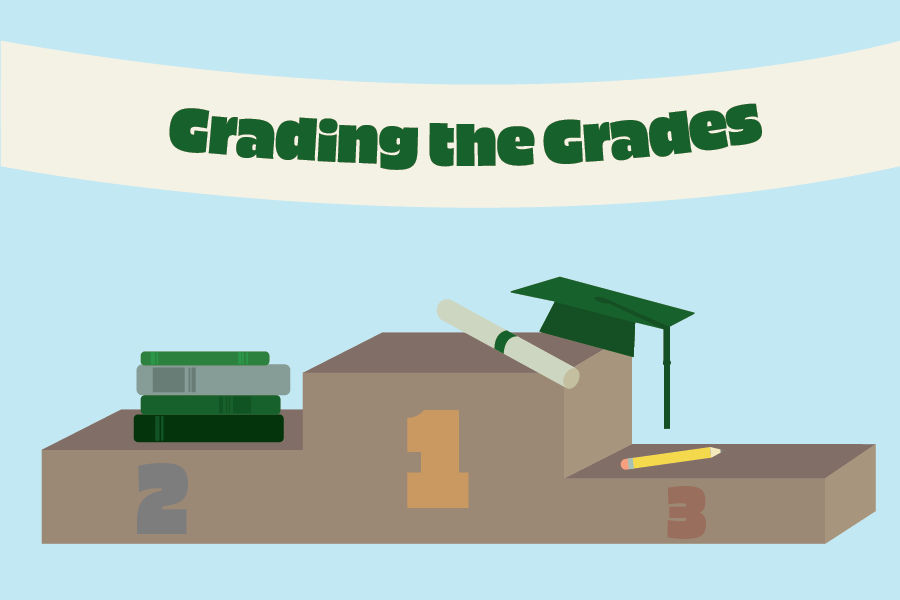


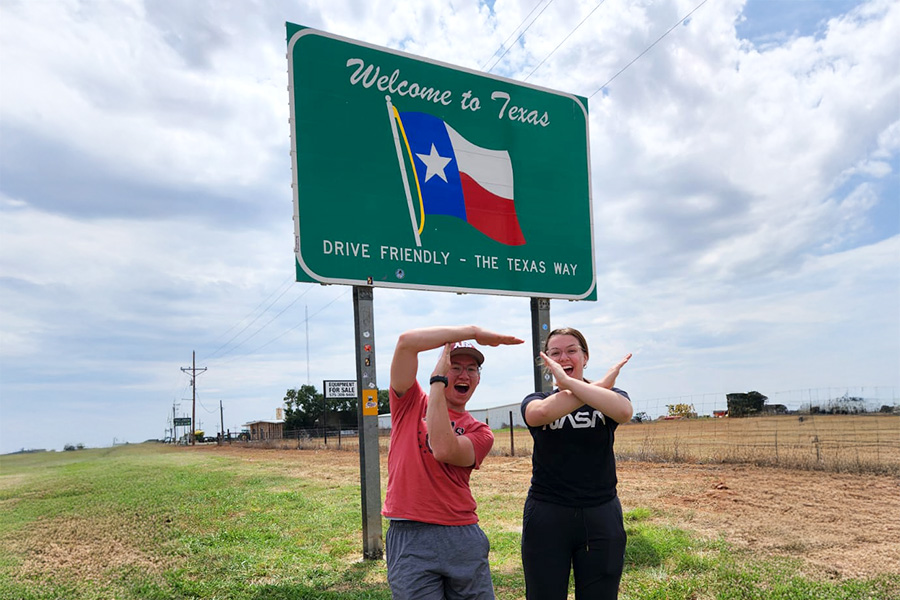


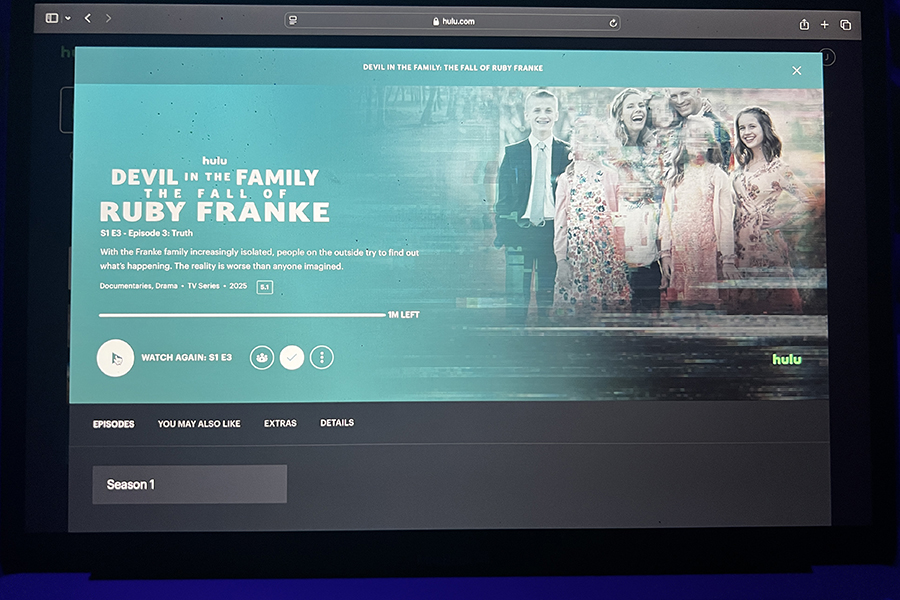






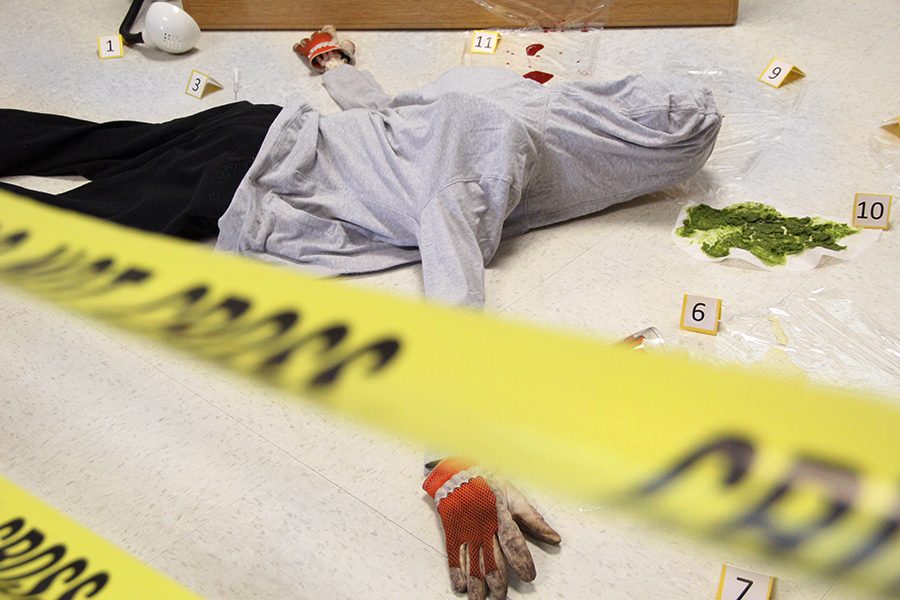
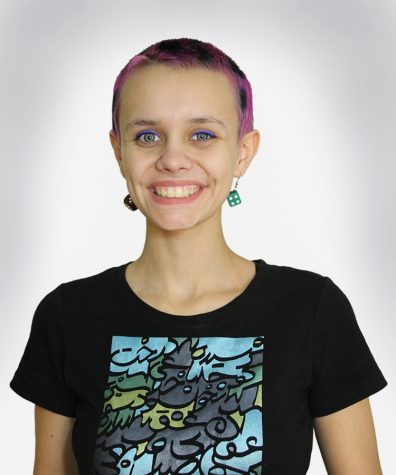
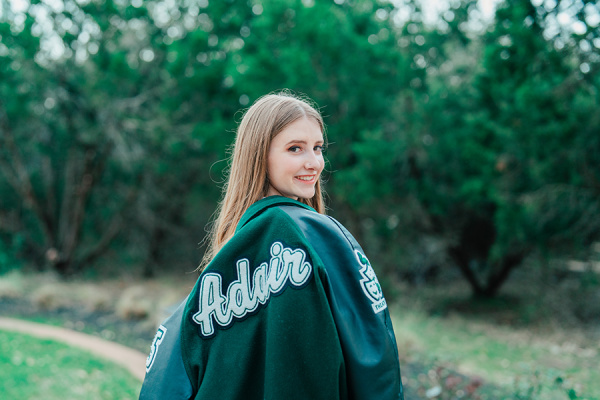
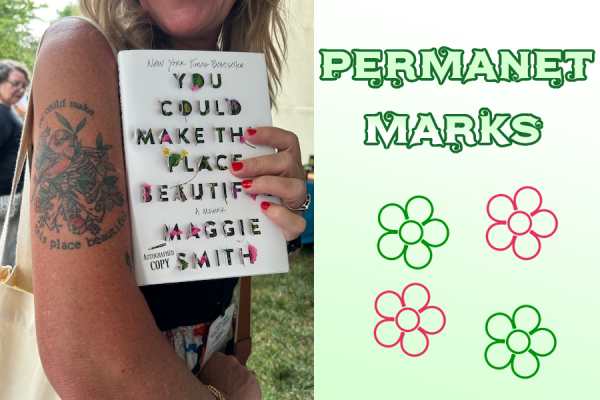
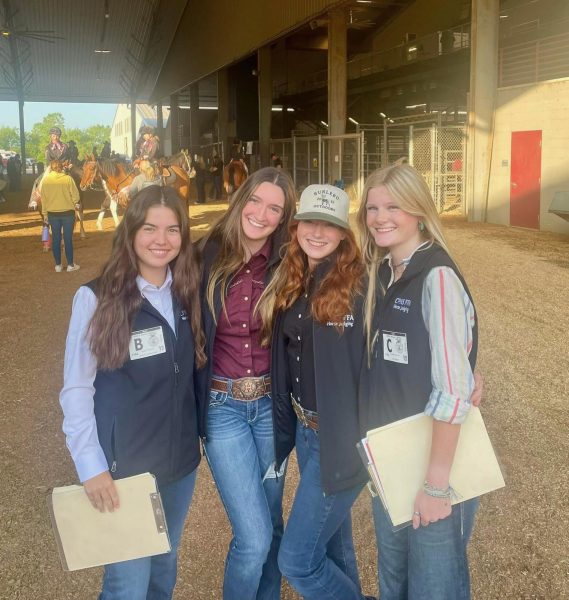
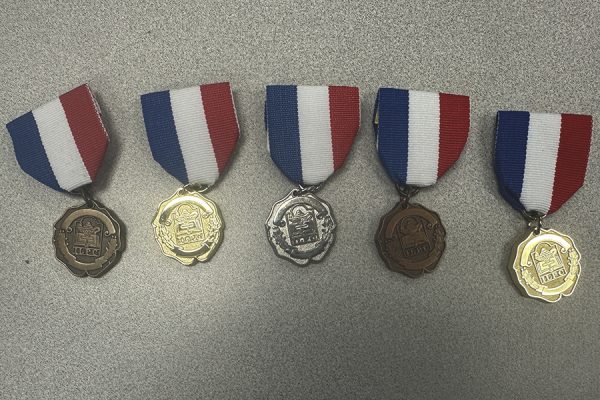
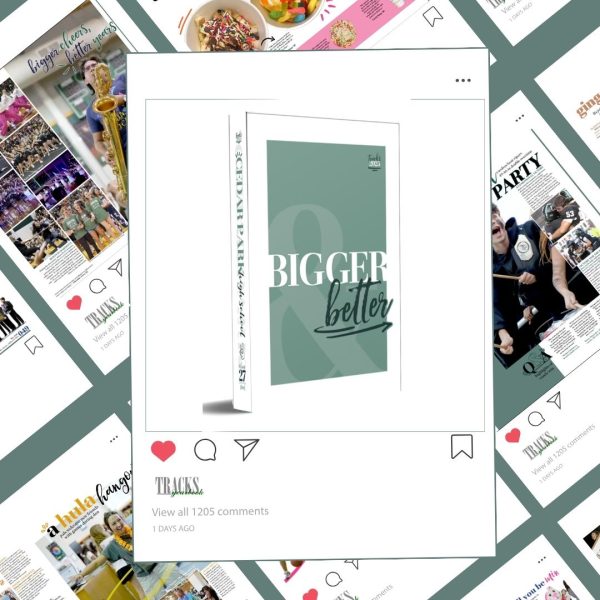
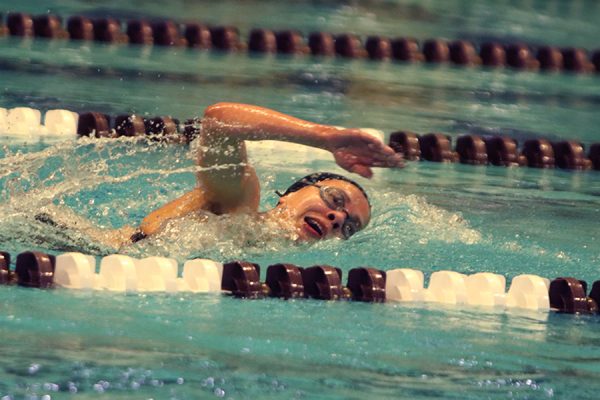

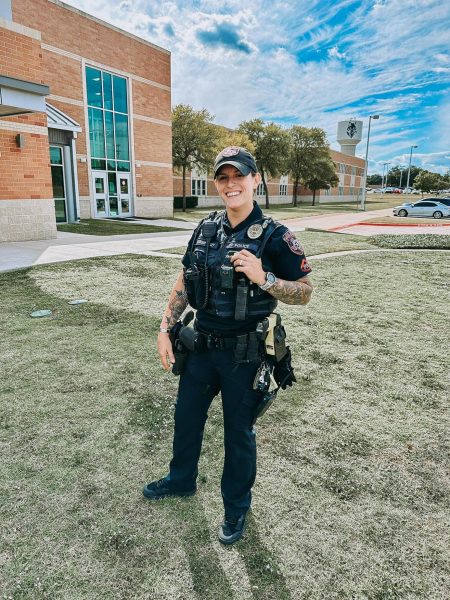
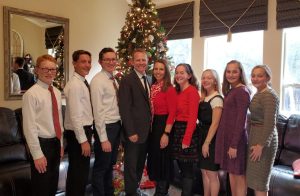
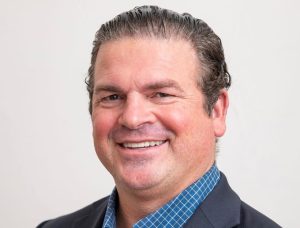
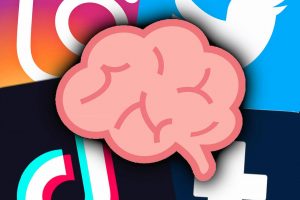
![Whereas classical art depicts a scene and tells a story, often of mythology or religious references, artists of modern times focus more on expressing ideas and feelings. The style of back then has since been replaced by splashes of color, curvy lines and other new art techniques. "[Over time] I think art has shifted more to emotion rather than human beauty, " sophomore Braeden Murray said. "Modern art is significantly more abstract and doesn't have an obvious theme in mind. Very simple shapes, no people to be seen, and more colorful. I think in the older [time period] the art was definitely more human based, with biblical [references] while modern art is more emotion based because it's not depicting a particular scene or action that's happening.”](https://cphswolfpack.com/wp-content/uploads/2023/02/2023-vs-1503-300x200.png)
